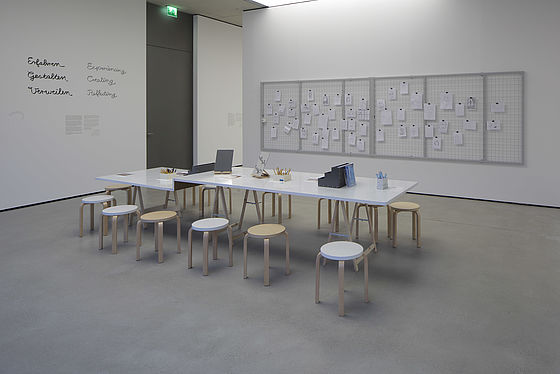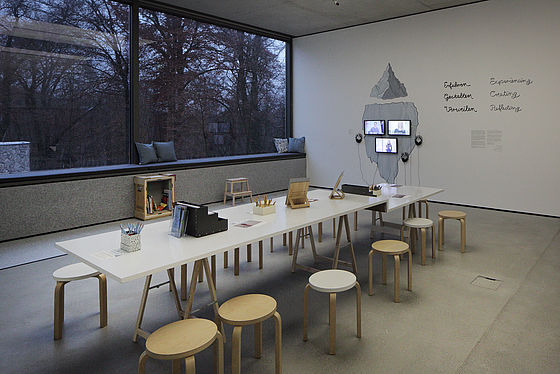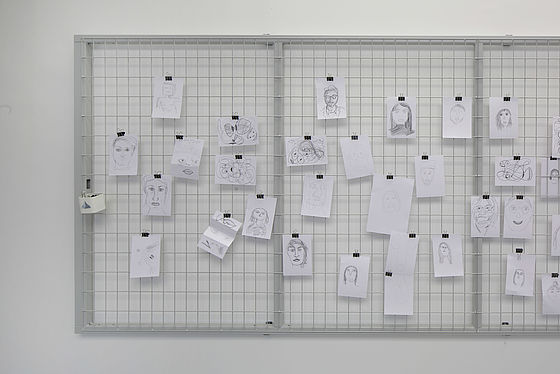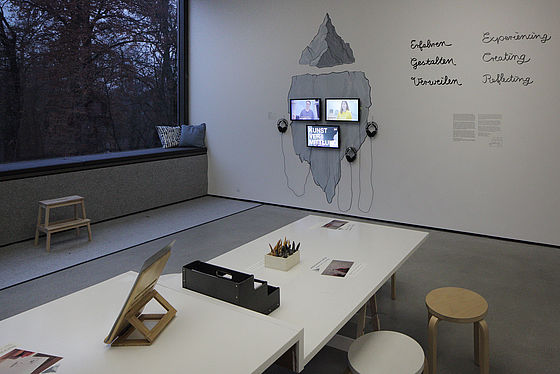A place to experience, shape and linger
|
A snapshot a few days before the opening of the exhibition: special transport boxes that are stored in the exhibition rooms, works of art that are carefully unpacked and inspected or are already leaning against the walls on soft foam. This phase, between months of planning and a solemnly opened exhibition, is filled with transports of heavy or complex sculptures and valuable paintings, catalog production or the writing of wall texts and art education concepts. Such museum-internal processes are mostly unknown to the visitors and are already completed at the beginning of the exhibition. Therefore, the team of the Art Education has decided to make the unknown sides of the everyday life of the museum visible to our visitors. With a curious look and a camera under our arm, we have taken a closer look behind the scenes of the Museum der Moderne Salzburg, our own department, the work of the technicians and registrars.
Visitors can view the results in our art education room in the exhibition The Tip of the Iceberg and get a unique look behind the scenes of our exhibition work. Members of the museum staff talk about their daily work and answer personal questions such as: What is a typical hand gesture of a registrar, an art educator or a technician? What is the most beautiful thing about your job? What does art need to be comfortable? With the video presentation of employees of the museum, however, only a part of a mutual acquaintance succeeds, because an important question remains open for us: Who actually climbs the top of the Mönchsberg and looks more closely at the treasures of the collection?
We want to get to know our visitors and therefore invite them to introduce themselves for the duration of the exhibition—until April 13, 2020. Be it through drawn self-portraits, which can be placed on a wall in the exhibition, by leaving the name and date of the visit on the still white wall, or in dialogue during our art talks. We give the mutual encounter with our visitors (a) space and are curious how it fills up till the end of the exhibition. Also, we answer another question that arose during our preparation time: Can a museum really be more than a center for art viewing? For us as art educators, the answer to this question is already clear, because we see the museum as a place to experience, shape and linger and look forward to sharing this with our visitors.




